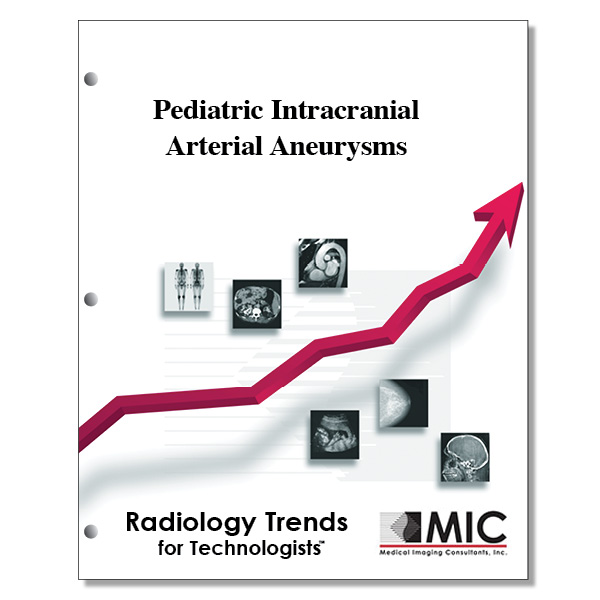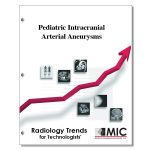

Pediatric Intracranial Arterial Aneurysms
An overview of intracranial arterial aneurysms found in the pediatric population.
Course ID: Q00348 Category: Radiology Trends for Technologists Modality: Vascular Interventional2.75 |
Satisfaction Guarantee |
$29.00
- Targeted CE
- Outline
- Objectives
Targeted CE per ARRT’s Discipline, Category, and Subcategory classification:
Computed Tomography: 2.75
Procedures: 2.75
Head, Spine, and Musculoskeletal: 2.75
Magnetic Resonance Imaging: 2.75
Procedures: 2.75
Neurological: 2.75
Registered Radiologist Assistant: 2.75
Procedures: 2.75
Neurological, Vascular, and Lymphatic Sections: 2.75
Vascular-Interventional Radiography: 2.75
Procedures: 2.75
Vascular Diagnostic Procedures: 1.50
Vascular Interventional Procedures: 1.25
Outline
- Introduction
- Features of Pediatric IAAs
- Idiopathic Aneurysms
- Traumatic Aneurysms
- Aneurysms Due to Excessive Hemodynamic Stress
- Vasculopathic Aneurysms
- Infectious Aneurysms
- Noninfectious Inflammatory Aneurysms
- Oncotic Aneurysms
- Familial Aneurysms
- Imaging Diagnosis of IAAs in the Pediatric Population
- Summary
Objectives
Upon completion of this course, students will:
- understand the two types of hemorrhagic strokes
- know the likelihood of hemorrhagic strokes in patients up to 20 years of age
- know where intracranial hemorrhages occur
- be familiar with the seven traits associated with IAAs in children
- understand the size of giant aneurysms
- understand which arteries comprise posterior cerebral circulation
- know which IAAs are unusual in the pediatric population
- understand what a de novo aneurysm is
- understand the definition of an idiopathic IAA
- know the meaning of mycotic
- know the location of the circle of Willis
- be aware of where traumatic IAAs occur
- know what the suffix “peri” means
- understand the most common cause of aneurysm due to excessive hemodynamic stress
- know if arteriovenous malformations are congenital or inherited
- understand what vasculopathic means
- know the mean age at which pediatric IAAs associated with congenital aneurysmal arteriopathies are normally noted
- know the dominant gender associated with congenital arteriopathies
- know what percentage of the pediatric population is affected by infectious aneurysms
- understand what a protozoan infection is
- describe the characteristics of noninfectious inflammatory aneurysms
- understand what a fusiform aneurysm is
- understand what an oncotic aneurysm is
- name two contiguously spreading tumors
- list first-degree relatives in regard to familial aneurysms
- list the five most common types of pediatric IAAs
- know which neuroimaging findings favor certain pathogenic subtypes
- list the imaging modalities used for aneurysm management
- understand how the diagnostic tools for the management of aneurysms are chosen
- understand which non-imaging tests help with diagnosing aneurysms
- know which imaging modality uses radio waves and magnetic fields to create images
- understand which diagnostic procedure used to diagnose aneurysm is the most invasive
- be familiar with the reason digital subtraction angiography is no longer routinely utilized
- know the treatment options for pediatric IAAs
- understand the three most common types of IAAs that occur in the first two decades of life
